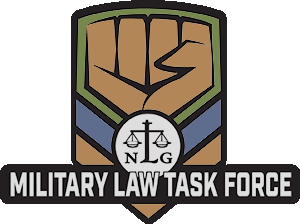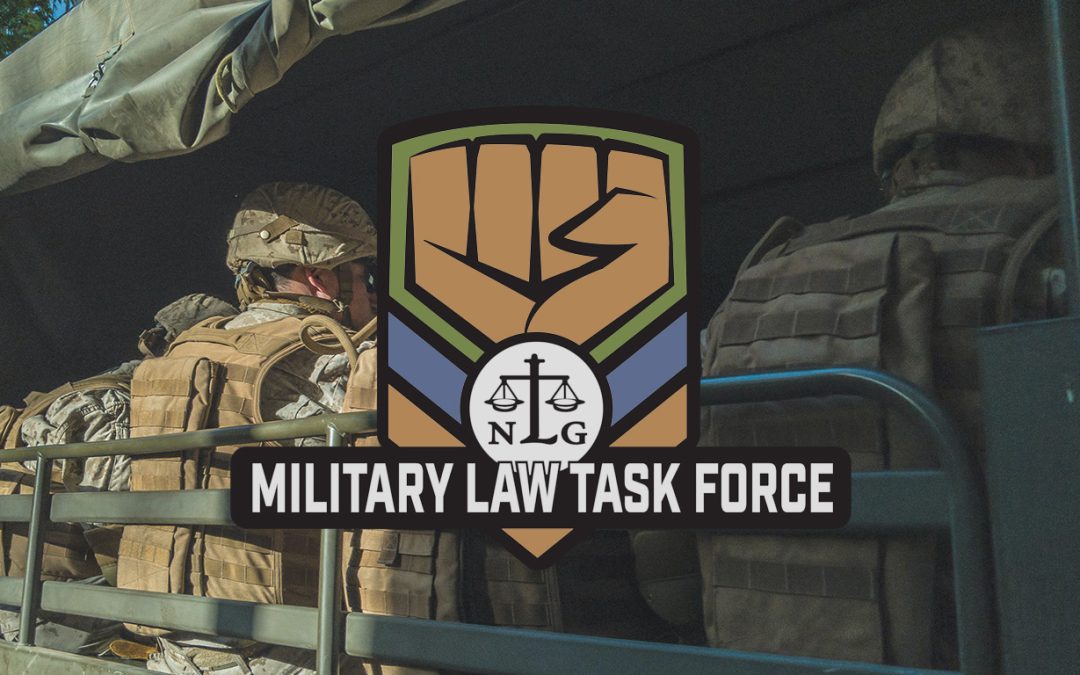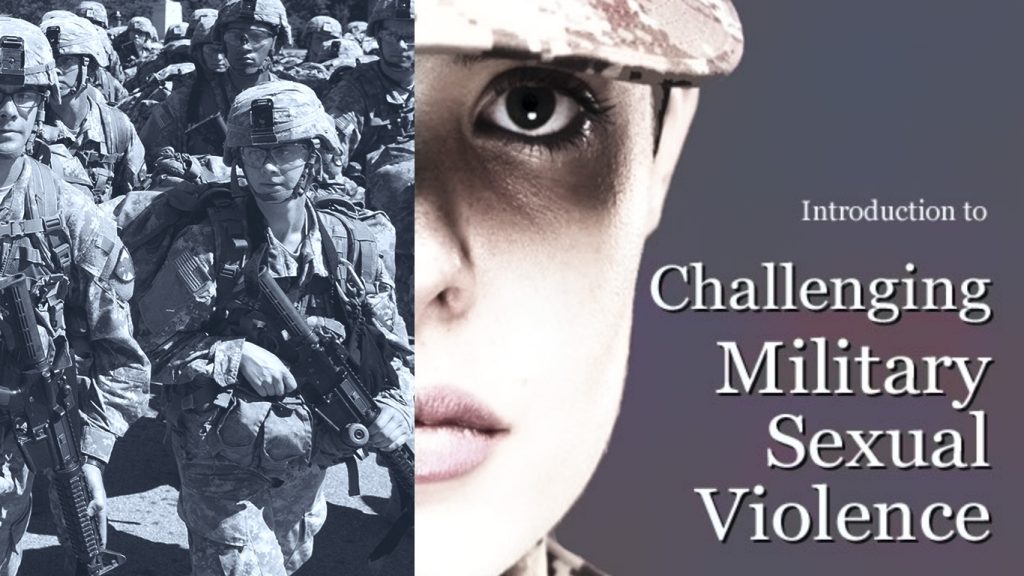Bullying and hazing are extremely serious problems in the military, but DoD and service regulations provide important protections for victims.
In recent years, considerable public attention has focused on hazing and bullying within the military, particularly in the Marine Corps. Media and Congressional attention followed the suicide of Lance Cpl. Harry Lew, who shot himself six years ago after repeated abuse and taunting by fellow Marines, and the March, 2016 death of Raheel Siddiqui, a Moslem recruit at Parris Island Marine Recruit Training Depot. The Marine Corps claims Siddiqui committed suicide by jumping down a 40-foot stairwell; his family and supporters are convinced he fell while running away from a drill instructor who had struck and bullied him.
The family believes he was bullied because of his religion, pointing to other instances of similar harassment at Parris Island—including a previous case in which the same drill instructor is accused of forcing a Moslem recruit into an industrial clothes dryer and running it, stopping periodically to ask the recruit to confess that he was a terrorist. Siddiqui’s death is still under investigation, and there are ongoing investigations of other abuse of recruits at Parris Island. A number of instructors and the former commander of Parris Island’s Third Recruit Training Battalion face court-martial for abuse of Siddiqui and others, though the first of these courts-martial has just resulted in an acquittal.
Parris Island Hazing Is Tip of the Iceberg
While the Parris Island scandal and Lance Cpl. Lew’s death are the most public incidents of abuse, they are merely the tip of the iceberg. Between January 2012 and June 2015, the Marine Corps received 377 reports of hazing or abuse, about one third of which were officially “substantiated.” Unfortunately, the General Accountability Office (GAO), in a 2016 report entitled “DoD and Coast Guard: Actions Needed to Increase Oversight and Management Information on Hazing Incidents Involving Servicemembers,” found that DoD and the services did not adequately track the number of hazing incidents. In reviewing DoD and service policies and interviewing servicemembers, GAO also found that the policies generally did not provide clear guidance on what did and did not constitute hazing, including a lack of clarity on the distinction between permissible corrective measures, such as extra military instruction, and hazing.
DoD Definitions of hazing and bullying
On December 23, 2015, the Deputy Secretary of Defense promulgated a memorandum, “Hazing and Bullying Prevention and Response in the Armed Forces,” which included DoD definitions of hazing and bullying. Ironically, this memo has not been made available to the public. However, the memo’s definitions were repeated in the May, 2016, issue of “The Counselor,” the newsletter of the Region Legal Service Office Naval District Washington. According to the newsletter, the DoD memo defines hazing as:
“Any conduct through which a military member or members, or a Department of Defense civilian employee or employees, without proper military or other governmental purpose but with a nexus to military service or Department of Defense civilian employment, physically or psychologically injure or create a risk of physical or psychological injury to one or more military members, Department of Defense civilian employees, or any other persons for the purpose of initiation into, admission into, affiliation with, change in status or position within, or as a condition for continued membership in any military or Department of Defense civilian organization.”
Bullying is defined as:
“An act of aggression by a military member or members, or Department of Defense civilian employee or employees, with a nexus to military service or Department of Defense civilian employment, with the intent of harming a military member, Department of Defense civilian, or any other persons, either physically or psychologically, without a proper military or other governmental purpose. Bullying may involve the singling out of an individual from his or her co-workers, or unit, for ridicule because he or she is considered different or weak. It often involves an imbalance of power between the aggressor and the victim.”
While DoD procedures for reporting and responding to hazing and bullying are not spelled out in the newsletter, responses to some forms of hazing and bullying are discussed in DoD Instruction 1438.06, “DoD Workplace Violence Prevention and Response Policy,” dated January 16, 2014. This Instruction provides the most recent publicly available military-wide guidance on these problems, and applies to both military personnel and civilian employees. The Instruction prohibits:
“violent behavior. The intentional use of physical force or power, threatened or actual, against a person or group that either results in or has a high likelihood of injury, death, or psychological harm to self or others”
and
“workplace violence. Any act of violent behavior, threats of physical violence, harassment, intimidation, bullying, verbal or non-verbal threat, or other threatening, disruptive behavior that occurs at or outside the work site.”
Under this Instruction, personnel who engage in or threaten such violent behavior may be immediately removed from the premises and denied re-entry pending completion of an appropriate investigation; they also are subject to removal from federal service and/or criminal prosecution. Workplace supervisors and all personnel are responsible for prevention of workplace violence under the Instruction.
Although the Instruction has been in place for over three years, its implementation has been spotty, at least for military personnel.
Individual service regulations on bullying and hazing have not been updated since the 2015 DoD memorandum, and do not use the same definitions. Advocates will want to compare DoD and service regulations to use the more helpful definitions. For example, Army policy, found in AR 600-20, “Army Command Policy,”[1] gives these definitions at section 4-19:
“(1) Hazing. Any conduct whereby a Servicemember or members regardless of service, rank, or position, and without proper authority, recklessly or intentionally causes a Servicemember to suffer or be exposed to any activity that is cruel, abusive, humiliating, oppressive, demeaning, or harmful. Soliciting or coercing another to participate in any such activity is also considered hazing. Hazing need not involve physical contact among or between military members or employees; it can be verbal or psychological in nature. Likewise, it need not be committed in the physical presence of the victim; it may be accomplished through written or phone messages, text messages, email, social media, or any other virtual or electronic medium. Actual or implied consent to acts of hazing does not eliminate the culpability of the perpetrator. Without outside intervention, hazing conduct typically stops at an identified end-point.
“(2) Bullying. Bullying is any conduct whereby a Servicemember or members, regardless of service, rank, or position, intends to exclude or reject another Servicemember through cruel, abusive, humiliating, oppressive, demeaning, or harmful behavior, which results in diminishing the other Servicemember’s dignity, position, or status. Absent outside intervention, bullying will typically continue without any identifiable end-point. Bullying may include an abuse of authority. Bullying tactics include, but are not limited to, making threats, spreading rumors, social isolation, and attacking someone physically, verbally, or through the use of electronic media.”
Despite these definitions, commands, services and some of the service regulations may use the terms bullying and hazing interchangeably. As GAO found in 2016, many servicemembers remain unclear on the definitions.
Although the regulations ignore this in their definitions, the GAO report also discussed the “sometimes correlated” relation between hazing and sexual assault, referring to its March, 2015, report on sexual assault. There, GAO found that hazing sometimes escalated into assault, and recommended that DoD revise its sexual assault policy to address how hazing could constitute sexual assault. Similarly, a 2014 study on sexual assault by the RAND Corporation discussed the extent to which hazing might lead to or constitute sexual assault.
Regulations and service policies
As noted above, AR 600-20 provides policy for the Army. Secretary of the Navy Instruction (SECNAVINST) 1610.2A of 15 July 2005[2] sets out policy on hazing for both the Navy and Marine Corps. It is supplemented by NAVADMIN 034-13[3], on reporting and tracking hazing and bullying incidents. Marine Corps policy is also contained in Marine Corps Order 1700.28B, “Hazing,”[4] The Air Force uses AFI 1-1, “Air Force Standards,”[5] and Air Force Memorandum, “Air Force Policy on Hazing,” as well as Air Education and Training Command Instruction 36-2909, “Recruiting, Education, and Training Standards of Conduct.”[6]
Commanders required to investigate allegations
Under the service regulations, commanders who receive reports of hazing or bullying are required to conduct investigations in each case. If the hazing or bullying is substantiated, commanders may take disciplinary or administrative action, or no action at all. All of the services treat hazing and bullying as a violation of Article 92 of the UCMJ (disobedience of orders). Some of the service regs point out that hazing/bullying may also be penalized under Article 93 of the UCMJ (cruelty and maltreatment), Article 128 (assault), Article 124 (maiming), etc. Complaints of hazing or bullying must be reported to service headquarters, and Equal Opportunity offices are used to track incidents.
The regulations attempt to distinguish hazing and bullying from legitimate behavior such as command-authorized training and corrective actions. The SECNAVINST, for example, sets out activities that do not amount to hazing or bullying, including “command-authorized or operational activities; the requisite training to prepare for such missions or operations; administrative corrective measures; extra military instruction; athletics events, command-authorized physical training, contests or competitions; and other similar activities that are authorized by the chain of command.” Not unsurprisingly, it is a common defense to allegations of bullying that the behavior falls within these exceptions.
Some of the regulations emphasize the importance of treating victims of hazing or bullying respectfully and avoiding re-victimization. Some state that victims are entitled to the assistance available to victims and witnesses of crimes. The SECNAVINST requires that victims who report hazing or bullying be advised of their rights immediately and offered, among other resources, legal advice and victim/witness advocacy services. The Army reg, on the other hand, does not include such language.
Complaints receive inconsistent enforcement
Unfortunately, the DoD and service policies are not always followed, and victims of hazing or bullying often have difficulty in reporting and remedying their situation. This is compounded by the fact that hazing or bullying often leaves its victims psychologically and physically vulnerable. Given this, the assistance of an attorney or other advocate can make a significant difference in victims’ ability to demand correction of the problem.
Generally, victims may report abuse and bullying to the command, to military law enforcement, or to the Inspector General. While EO is used to track reports and data, it is unlikely that they provide a good reporting option; AR 600-20, for example, clearly states that these are not EO complaints.
Where victims report the problem themselves, they may find that their superiors want them to go through the chain of command to do so, a frustrating and sometimes very ineffective method. Victims may want to use their commands’ open-door policies, which sometimes require walking a complaint through the chain of command, but do not require revealing the nature of the complaint to anyone other than the commander. Advocates, of course, may communicate directly with the commander and, where useful, with the command staff judge advocate or legal officer as well.
Because the policies are not well followed, and many commands may have only passing familiarity with the requirements of the regulations, it helps to be clear in reporting that the complaint is one of hazing or bullying. Reference to the service and DoD regulations may help commanders to remember that there are specific provisions to be followed and that complaints must always be investigated. Where commanders are unresponsive, or part of the problem, Article 138 complaints may be appropriate. (See On Watch, December, 2013, for an overview of Article 138.[7])
IG investigations may also be helpful, but their conduct and results vary widely from office to office. In making IG complaints, it is important to provide a full written explanation of the problem, with witness statements where possible, copies of any other documentation of the hazing or bullying, and a list of witnesses whom the IG should interview. Follow-up contact with the IG, particularly from an attorney or advocate, may be helpful in keeping the investigation on track. Some attorneys and advocates prefer not to use the IG, since a report which finds the complaints unsubstantiated may make other complaint procedures more difficult.
In part as a result of the 2016 GAO report, the 2017 National Defense Authorization Act legislated “Improved Department of Defense Prevention of and Response to Hazing in the Armed Forces.” Section 549 of the Act requires the establishment of a database on hazing incidents, improved training on hazing, and annual reports to Congress. The measure’s training and annual reports are intended to encourage reporting of hazing incidents, including anonymous reporting, although methods of anonymous reporting are not described. It remains to be seen whether these provisions will improve implementation of overall policy. Intervention by advocates and attorneys may well provide more impetus for commands to follow the rules.
Kathleen Gilberd is a legal worker in San Diego, California, working in the areas of discharge review and military administrative law. She is the executive director of the MLTF.
- http://armypubs.army.mil/epubs/DR_pubs/DR_a/pdf/web/r600_20.pdf ↑
- https://doni.daps.dla.mil/Directives/01000%20Military%20Personnel%20Support/01-600%20Performance%20and%20Discipline%20Programs/1610.2A.pdf ↑
- http://www.public.navy.mil/bupers-npc/reference/messages/Documents/NAVADMINS/NAV2013/NAV13034.txt ↑
- http://www.marines.mil/Portals/59/Publications/MCO%201700.28B.pdf. ↑
- http://static.e-publishing.af.mil/production/1/af_cc/publication/afi1-1/afi1-1.pdf ↑
- Air Education and Training Command Instruction 36-2909, “Recruiting, Education, and Training Standards of Conduct ↑
- https://nlgmltf.org/military-law-library/publications/article-138/ ↑



